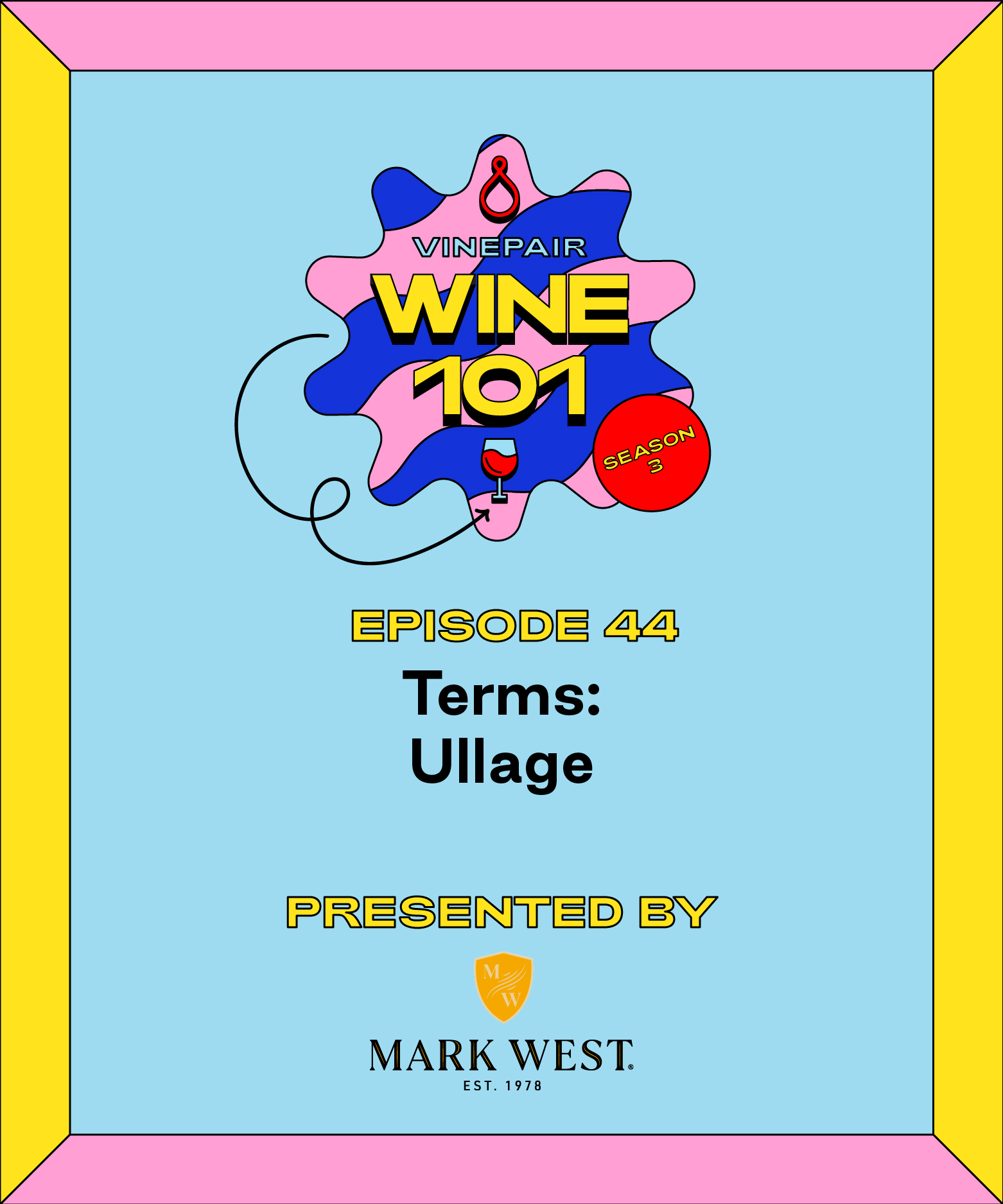
This episode of “Wine 101” is sponsored by Mark West Wines. The U.S. has been obsessed with Pinot Noir since 2004, and it continues to be one of the most popular wines on the market today. You’ll be hard-pressed to find a better Pinot with this level of balance than Mark West’s, especially at this price — less than $15!
As we journey further into the world of wine vocabulary, we encounter the term “ullage.” It originally comes from the Latin word “oculus,” which the Romans used to refer to a barrel’s cork hole. Hundreds of years later, the word was eventually adopted by the French, who morphed it into “ouillage.” Outside of France, ouillage became ullage, and it took on a new definition as a term for the space in a wine-containing vessel — whether that be a barrel or bottle — that isn’t taken up by the wine itself.
Ullage all starts with evaporation. While wine is maturing in the barrel, water — the principal component in wine — will start to diffuse through the pores in oak, working its way out into the atmosphere. Some alcohol will evaporate, too, but it does so in small, negligible amounts. If there is a lot of humidity in the cellar atmosphere, this evaporation will happen a lot slower.
As the wine matures, a pocket made up of water vapor, alcohol vapors, and traces of carbon dioxide will begin to form near the top of the barrel. And, assuming the stopper, or bung, is properly affixed to the barrel, those compounds will work their way back into the wine and help it age.
However, if oxygen somehow slips into that vacuum, acetobacter might form and begin turning the wine into vinegar. To prevent this, anywhere between twice a week and once a month, winemakers will top off the barrels with wine to fill up that space. In the case of stainless-steel tanks, winemakers will sometimes “shock” the liquid with inert gas to stop oxygen from building up. Either way, the overall goal is to make sure that the ullage, or space at the top of the barrel, contains as little oxygen as possible.
From the consumer standpoint, understanding the nature of ullage comes in handy when looking at older, age-worthy bottles. Just like how it happens in the barrel, ullage is still a factor in the bottle. In general, ullage space will increase little by little over time, and how big that space gets helps auction houses and wine collectors determine the resale value of fine wines. At the end of the day, it’s all about monitoring a wine’s headspace. And in this episode, Keith breaks it all down in detail. Tune in for more.
Listen Online
Follow Keith on Instagram @VinePairKeith. Rate and review this podcast wherever you get your podcasts from. It really helps get the word out there.
“Wine 101” was produced, recorded, and edited by yours truly, Keith Beavers, at the VinePair headquarters in New York City. I want to give a big old shout-out to co-founders Adam Teeter and Josh Malin for creating VinePair. Big shout-out to Danielle Grinberg, the art director of VinePair, for creating the most awesome logo for this podcast. Also, Darby Cicci for the theme song. Listen to this. And I want to thank the entire VinePair staff for helping me learn something new every day. See you next week.
E. & J. Gallo Winery is excited to sponsor this episode of VinePair’s “Wine 101.” Gallo always welcomes new friends to wine with an amazingly wide spectrum of favorites, ranging from everyday to luxury and sparkling wine. (Gallo also makes award-winning spirits, but this is a wine podcast.) Whether you are new to wine or an aficionado, Gallo welcomes you to wine. Visit TheBarrelRoom.com today to find your next favorite, where shipping is available.
